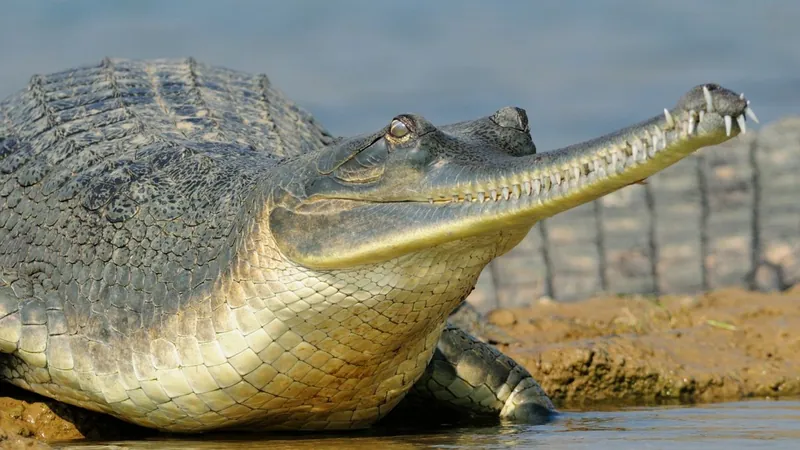
Gharial: The Extraordinary Crocodilian that Sings for Love and Blows Bubbles
2024-11-09
Author: Ming
The gharial, scientifically known as Gavialis gangeticus, is an intriguing prehistoric crocodilian that roams the freshwater rivers of India and Nepal. This creature has garnered attention not just for its unique appearance but also for its remarkable courting rituals.
Distinctive Features and Mating Rituals
One of the most distinctive features of the gharial is its elongated, slender snout, which has earned it the reputation of looking as if it was "slammed in a door." Notably, male gharials possess a bulbous growth at the tip of their snouts, referred to as the "ghara." This lightbulb-shaped bump, reminiscent of an Indian cooking pot, plays a significant role in attracting females. During mating season, which typically occurs in December and January, males engage in a fascinating display: they blow bubbles and produce a deep buzzing sound to create what can only be described as a love song. The ghara acts as a vocal resonator, enhancing the sound and helping males charm their potential mates.
Reproduction and Eggs
Once the gharial’s mating calls successfully attract a female—sometimes even several, as they are known to be polygamous—the pair copulates. By March or April, as the dry season sets in, the female prepares to lay her eggs. Gharial eggs are among the largest of all crocodilians, weighing up to 6 ounces (170 grams) and comparable in size to a hockey puck. Females typically lay around 40 eggs in sandy nests.
Incubation and Hatchlings
The incubation period for gharial eggs spans between 60 to 80 days, and remarkable for crocodilians, the sex of the hatchlings is determined during this time. After hatching, baby gharials stay close to their mothers for several weeks, if not months, learning to thrive in their aquatic environment.
Physical Characteristics and Hunting Behavior
Physically, gharials can grow to impressive lengths of up to 15 feet (4.5 meters) and weigh around 350 pounds (160 kilograms). Unlike other crocodilians that tend to ambush their prey, gharials have a unique hunting strategy; they detect vibrations in the water by swiping their heads side to side, which allows them to locate fish with remarkable precision. Their interlocking teeth are perfectly designed for capturing slippery prey.
Adaptations and Conservation Status
Despite their exceptional adaptations to aquatic life, gharials struggle on land due to their weak leg muscles, resorting instead to sliding on their bellies when they need to move above water. Fascinatingly, gharials represent an evolutionary line that diverged from other crocodilians over 40 million years ago, highlighting their unique place in the animal kingdom.
As conservation efforts continue, it is crucial to protect these remarkable creatures from habitat loss and other threats. The gharial's bizarre mating rituals, combined with its ancient lineage, make it a true symbol of the rich biodiversity found in freshwater ecosystems. Will these prehistoric fish-hunters thrive in modern times, or will they continue to struggle against the tides of change? Only time will tell!


 Brasil (PT)
Brasil (PT)
 Canada (EN)
Canada (EN)
 Chile (ES)
Chile (ES)
 España (ES)
España (ES)
 France (FR)
France (FR)
 Hong Kong (EN)
Hong Kong (EN)
 Italia (IT)
Italia (IT)
 日本 (JA)
日本 (JA)
 Magyarország (HU)
Magyarország (HU)
 Norge (NO)
Norge (NO)
 Polska (PL)
Polska (PL)
 Schweiz (DE)
Schweiz (DE)
 Singapore (EN)
Singapore (EN)
 Sverige (SV)
Sverige (SV)
 Suomi (FI)
Suomi (FI)
 Türkiye (TR)
Türkiye (TR)